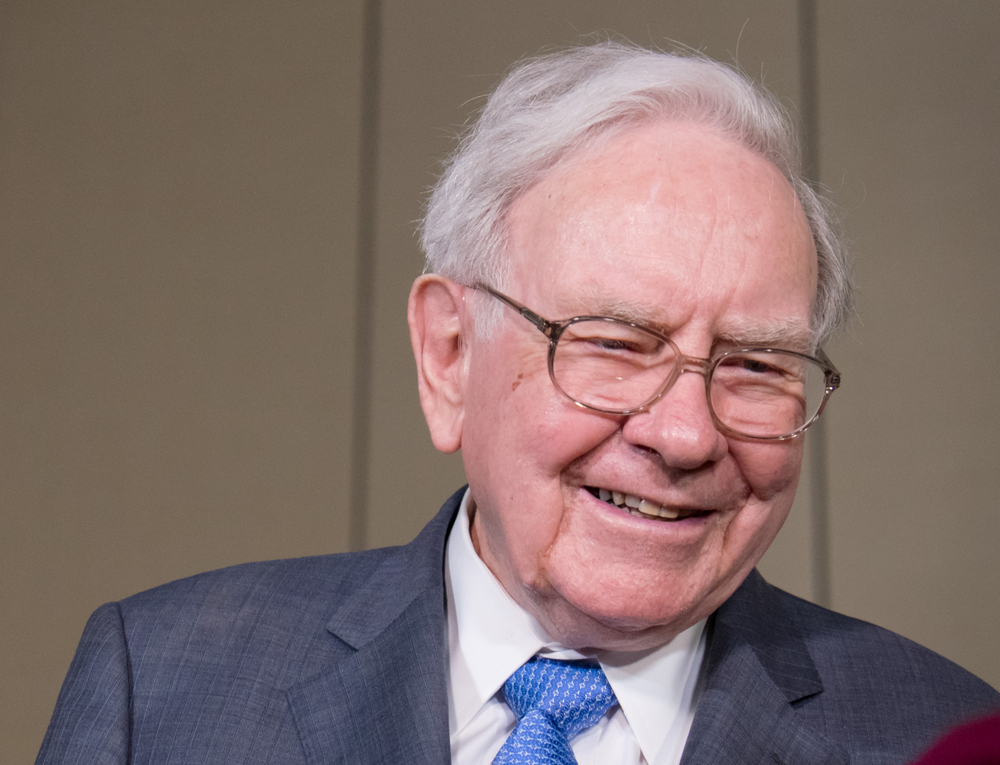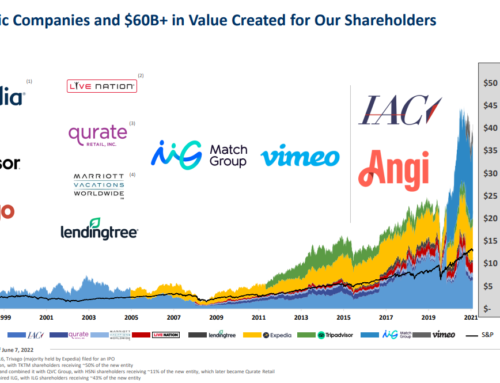Warren Buffett and Spin-offs
Warren Buffett, the world’s greatest investor, has a complicated history with spin-offs.
On the one hand, he’s made a lot of money investing in them.
But he would never spin off a Berkshire subsidiary unless forced to by regulators.
And I have to say, I agree with his seemingly contradictory approach.
Let’s dig into his approach to investing in spin-offs.

Does Buffett Invest in Spin-offs?
In short, yes.
From 1957 to 1969, Buffett ran an investment partnership which compounded at 29.5% annually.
In his early years managing his partnership, Buffett did invest in spin-offs.
Buffett categorized his partnership’s investments into four different groups: 1) Generals – Private Owner Basis 2) Generals – Relatively Undervalued 3) Workouts and 4) Controls.
Here is what Buffett wrote about workouts:
“These are securities with a timetable. They arise from corporate activity – sell-outs, mergers, reorganizations, spin-offs, etc. In this category we are not talking about rumors or ‘inside information’ pertaining to such developments, but to publicly announced activities of this sort. We wait until we can read it in the paper.”
Source: Buffet 1963 Partnership Letter
Unfortunately, Buffett doesn’t dive any deeper into his strategies regarding spin-offs, but we do know that he invested 23% of his Partnership portfolio in workouts (which included spin-offs) in 1969.
Does Berkshire Hathaway invest in spin-offs today? Yes – most definitely.
Berkshire’s current portfolio (as of 12/31/22) includes American Express (Lehman Brothers spin-off) and Moody’s Corp (Dun & Bradstreet spin-off).
In the past Berkshire has invested in many spin-offs including Phillips 66 (ConocoPhillips spin-off), Synchrony Financial (General Electric spin-off), and Seritage Growth Properties (Sears spin-off).
There you have it.
We know that Warren Buffett has invested in spin-offs for his entire career.
So the next logical question is the following…
Would Buffett ever Spin Off a Berkshire Subsidiary?
In short, no.
To understand why, let’s look at what Buffett wrote in his 2014 Berkshire Hathaway letter to shareholders.
“Conglomerates, it should be acknowledged, have a terrible reputation with investors. And they richly deserve it…..So what do Charlie and I find so attractive about Berkshire’s conglomerate structure? To put the case simply: If the conglomerate form is used judiciously, it is an ideal structure for maximizing long-term capital growth.
At Berkshire, we can – without incurring taxes or much in the way of other costs – move huge sums from businesses that have limited opportunities for incremental investment to other sectors with greater promise. Moreover, we are free of historical biases created by lifelong association with a given industry.
Another major advantage we possess is the ability to buy pieces of wonderful businesses – a.k.a. common stocks. That’s not a course of action open to most managements. Over our history, this strategic alternative has proved to be very helpful; a broad range of options always sharpens decision-making. The businesses we are offered by the stock market every day – in small pieces, to be sure – are often far more attractive than the businesses we are concurrently being offered in their entirety.
Additionally, the gains we’ve realized from marketable securities have helped us make certain large acquisitions that would otherwise have been beyond our financial capabilities.”
Later in the letter Buffett directly addresses whether Berkshire would ever voluntarily spin-off a subsidiary…
“Sometimes pundits propose that Berkshire spin off certain of its businesses. These suggestions make no sense. Our companies are worth more as part of Berkshire than as separate entities. One reason is our ability to move funds between businesses or into new ventures instantly and without tax. In addition, certain costs duplicate themselves, in full or part, if operations are separated. Here’s the most obvious example: Berkshire incurs nominal costs for its single board of directors; were our dozens of subsidiaries to be split off, the overall cost for directors would soar. So, too, would regulatory and administration expenditures.
Finally, there are sometimes important tax efficiencies for Subsidiary A because we own Subsidiary B. For example, certain tax credits that are available to our utilities are currently realizable only because we generate huge amounts of taxable income at other Berkshire operations. That gives Berkshire Hathaway Energy a major advantage over most public-utility companies in developing wind and solar projects.
Investment bankers, being paid as they are for action, constantly urge acquirers to pay 20% to 50% premiums over market price for publicly-held businesses. The bankers tell the buyer that the premium is justified for “control value” and for the wonderful things that are going to happen once the acquirer’s CEO takes charge. (What acquisition-hungry manager will challenge that assertion?) A few years later, bankers – bearing straight faces – again appear and just as earnestly urge spinning off the earlier acquisition in order to “unlock shareholder value.” Spin-offs, of course, strip the owning company of its purported “control value” without any compensating payment. The bankers explain that the spun-off company will flourish because its management will be more entrepreneurial, having been freed from the smothering bureaucracy of the parent company. (So much for that talented CEO we met earlier.)
If the divesting company later wishes to reacquire the spun-off operation, it presumably would again be urged by its bankers to pay a hefty “control” premium for the privilege. (Mental “flexibility” of this sort by the banking fraternity has prompted the saying that fees too often lead to transactions rather than transactions leading to fees.) It’s possible, of course, that someday a spin-off or sale at Berkshire would be required by regulators. Berkshire carried out such a spin-off in 1979, when new regulations for bank holding companies forced us to divest a bank we owned in Rockford, Illinois.
Voluntary spin-offs, though, make no sense for us: We would lose control value, capital-allocation flexibility and, in some cases, important tax advantages. The CEOs who brilliantly run our subsidiaries now would have difficulty in being as effective if running a spun-off operation, given the operating and financial advantages derived from Berkshire’s ownership. Moreover, the parent and the spun-off operations, once separated, would likely incur moderately greater costs than existed when they were combined.”
Source: Berkshire Hathaway 2014 Annual Report
While Buffett cites control value and tax advantages as important benefits of the conglomerate structure for Berkshire, the far and away most important benefit is capital allocation flexibility.
The conglomerate structure enables Buffett, the world’s best capital allocator, to allocate the billions of dollars in cash that Berkshire generates every year.
This has worked very well for Berkshire shareholders over the past fifty-seven years as evidenced by the stock’s 19.8% annual return during that period.
Is Warren Buffett Running Your Conglomerate?
To summarize, Buffett does like to invest in spin-offs but is unlikely to spin off any Berkshire subsidiaries unless required to do so for regulatory reasons.
Why has the conglomerate structure worked so well for Berkshire yet failed for so many other firms?
The answer is simple: Warren Buffett.
If you don’t have a once-in-a-lifetime capital allocator running the business, odds are your conglomerate will muddle along.
99.9% of conglomerates would be better off simplifying through spin-offs.
“Conglomerates, it should be acknowledged, have a terrible reputation with investors. And they richly deserve it.”
– Warren Buffett







Leave A Comment